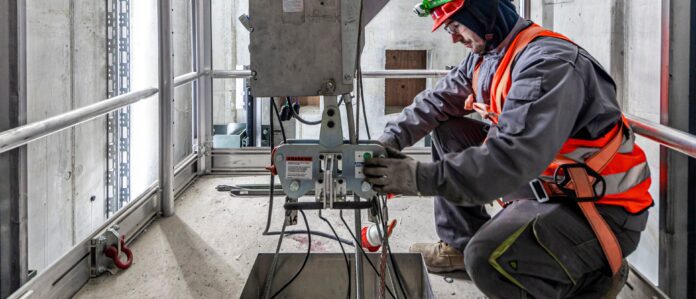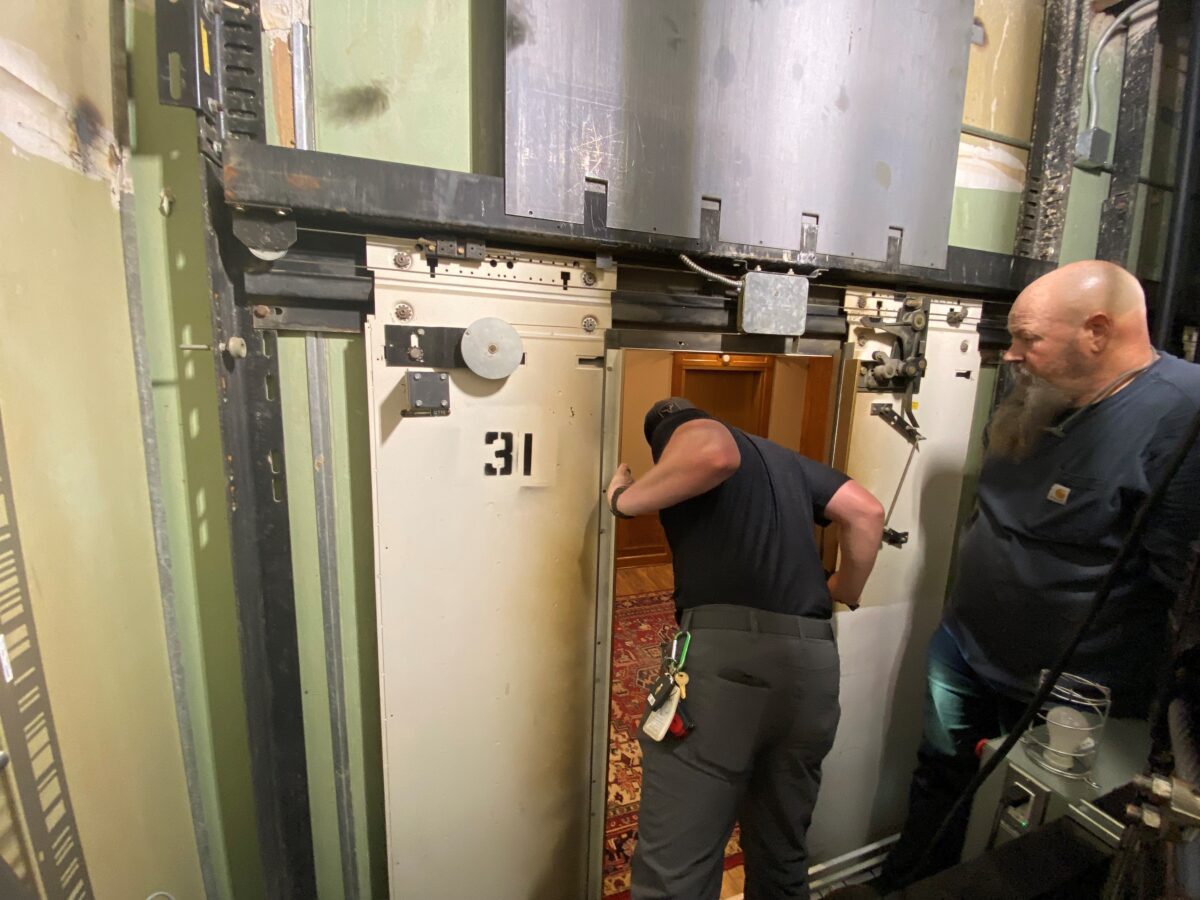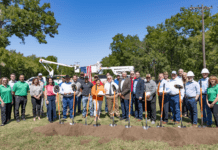
Elevators. They take us to upper floors and down to basements, saving steps and making multi-floor buildings and skyscrapers viable for living and working.
“It’s something many people don’t consider in their daily lives, but [elevators are] as common as the automobile or airplane as a method of moving people safely,” says Brandon Shultz, branch manager for Schindler Elevators and Escalators in Oklahoma. The 150-year-old company’s international presence moves two billion people every day on elevators, escalators and moving walks.

In Oklahoma, there are a handful of major elevator manufacturing and installation companies, says Jim Williams, director of the safety standards division for the Oklahoma Department of Labor (ODL). The ODL has jurisdiction over elevator standards across the entire state, except for the City of Oklahoma City, which has its own codes and oversight for both elevators and escalators.
“A licensed inspector must approve the plans for any new installations, and once the elevator is installed, it must pass an acceptance test before being put into service,” says Williams. “After the acceptance, the elevator must be inspected either every year or every other year, depending on the type of elevator. If the elevator passes each annual or biannual inspection, the elevator is issued a Certificate of Operation, which is required to be in plain view or at least available to be viewed by the public.”
ODL has jurisdiction over 77 counties’ elevators and escalators with public access – although not in private residences, says Oklahoma Labor Commissioner Leslie Osborn.
“The Department of Labor oversees workplace safety, labor laws and, over the years, the legislature has added safety tasks,” says Osborn. “For example, we check every aspect of asbestos abatement. We also check commercial grade hot water heating due to the explosion of a commercial grade boiler in Oklahoma City in the past. Elevators are just one of the things we oversee. We keep people safe in the background.”
So just how safe are elevators? Since public elevators must, by law, display inspection notices, they are “generally incredibly safe,” says Williams, “as long as all tests and inspections remain current and routine maintenance is maintained. But it is estimated that elevators cause about 30 deaths and 17,000 injuries annually in the United States.”

What should the average person be aware of before they step into that moving space that travels, in Oklahoma, as high as 50 stories into the sky at the Devon Tower – or maybe someday at the proposed Legend Tower that, at 1,907 feet, would make it the highest building in the nation?
“Any elevator operating without a current Certificate of Operation may indicate a problem,” says Williams. “Otherwise, any elevator that is rough, loud or doesn’t stop exactly level with the floor, presents a dangerous situation.”





















